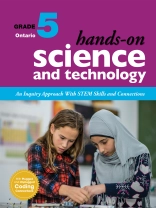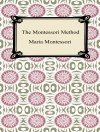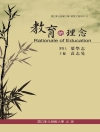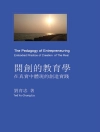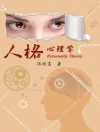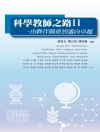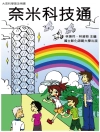Hands-On Science and Technology for Ontario, Grade 5 is an easy-to-use resource for teaching the five strands of the Ontario science and technology (2022) curriculum:
- STEM Skills and Connections
- Life Systems: Human Organ Systems
- Matter and Energy: Properties of and Changes in Matter
- Structures and Mechanisms: Forces Acting on Structures and Mechanisms
- Earth and Space Systems: Conservation of Energy and Resources
Hands-On Science and Technology for Ontario, Grade 5 encourages students’ natural curiosity about science and the world around them as they participate in hands-on activities and explore their environment. Using the inquiry approach, this comprehensive resource
- fosters students’ understanding of STEM (science, technology, engineering, and mathematics) skills
- makes coding and emerging technologies approachable for both teachers and students
- emphasizes personalized learning using a four-part instructional process: activate, action, consolidate and debrief, enhance
- relates science and technology to sustainability and our changing world, including society, the economy, and the environment
- focuses on practical applications of the engineering design process as students work on solutions to real-life problems
- builds understanding of Indigenous knowledge and perspectives specific to Ontario
- explores contributions to science and technology by people with diverse lived experiences
Using proven Hands-On features, this book provides resources for both teachers and students including background information on the science topics; complete, easy-to-follow lesson plans; materials lists; and digital image banks and reproducibles (find download instructions in the Appendix of the book).
Innovative elements developed specifically for the Ontario curriculum include the following:
- plugged and unplugged coding activities in nearly every lesson
- land-based learning activities
- opportunities for students to use the scientific research process, scientific experimentation process, and engineering design process
- a fully developed assessment plan to guide assessment for, as, and of learning
- ideas and prompts for STEM Makerspace projects
Table of Content
Introduction to Hands-On Science and Technology for Ontario, Grade 5 1
- Introduction to Hands-On Science and Technology 2
- Program Introduction 2
- The Inquiry Approach to Science and Technology 2
- 21st Century Teaching and Learning 3
- The Goals of the Science and Technology Program 3
- Hands-On Science and Technology Strands and Expectations 4
- Hands-On Science and Technology Fundamental Concepts and Big Ideas 4
- Hands-On Science and Technology Program Principles 5
- Infusing Indigenous Perspectives 5
- Cultural Connections 7
- Land-Based Learning 7
- Technology 7
- Sustainability 7
- Program Implementation 8
- Program Resources 8
- Classroom Environment 11
- Planning Units—Timelines 12
- Classroom Management 12
- Classroom Safety 12
- Scientific Inquiry Skills: Guidelines for Teachers 12
- Observing 12
- Questioning 13
- Exploring 13
- Classifying 13
- Measuring 14
- Communicating, Analyzing, and Interpreting 14
- Predicting 16
- Inferring 16
- Inquiry Through Investigation and Experiments 16
- Inquiry Through Research 17
- Online Considerations 18
- Addressing Students’ Literacy Needs 18
- Technological Problem Solving 18
- Makerspace 19
The Hands-On Science and Technology Assessment Plan 21
- Assessment for Learning 22
- Assessment as Learning 22
- Assessment of Learning 23
- Performance Assessment 24
- Portfolios 24
- Evidence of Student Achievement Levels for Evaluation 25
- Important Note to Teachers 25
- References 26
- Assessment Reproducibles 27
- Achievement Chart for Science & Technology 42
Unit 1: Human Organ Systems 45
- Introduction 46
- Unit Overview 50
- Curriculum Correlation 51
- Resources for Students 52
- 1 What Do We Know About Keeping Our Bodies Healthy? 56
- 2 Why Does What We Eat Matter? 61
- 3 What Happens to Food After We Eat It? 71
- 4 Why Is Water Important for a Healthy Body? 77.
- 5 How Can We Design and Construct a Model of the Digestive System? 81
- 6 Why Is Healthy Blood Red? 85
- 7 How Does Exercise Affect Your Heart and Lungs? 92
- 8 How Do Healthy Joints, Bones, and Muscles Help You Move? 100
- 9 How Does the Brain Send Messages to the Rest of the Body? 107
- 10 How Does Skin Protect Our Bodies? 113
- 11 How Do Our Bodies Fight Illness and Injury? 118
- 12 How Do I Keep My Body Healthy? 126
- 13 Inquiry Project: What More Do I Want to Know About Keeping My Body Healthy? 129
Unit 2: Forces Acting on Structures and Mechanisms 133
- Introduction 134
- Unit Overview 138
- Curriculum Correlation 139
- Resources for Students 140
- 1 What Do We Know About Forces and Structures? 143
- 2 How Do Bridges Withstand Forces? 148
- 3 What Can We Learn About Forces and Machines? 154
- 4 How Does a Lever Make Work Easier? 158
- 5 How Does an Inclined Plane Make Work Easier? 167
- 6 How Does a Screw Make Work Easier? 171
- 7 How Does a Wedge Make Work Easier? 174
- 8 How Do Forces of Nature Affect the Environment? 178
- 9 How Can We Protect Ourselves From Forces in Our Environment? 184
- 10 Inquiry Project: How Can We Design a Structure to Withstand Forces in the Environment? 188
Unit 3: Properties of and Changes in Matter 191
- Introduction 192
- Unit Overview 195
- Curriculum Correlation 196
- Resources for Students 197
- 1 What Do We Know About the Properties of Matter? 200
- 2 What Are Some Properties of Solids, Liquids, and Gases? 205
- 3 How Do Substances Interact With Water? 212
- 4 How Do Substances Interact to Produce Gases? 217
- 5 How Can We Measure and Compare the Mass of Objects? 221
- 6 How Does Water Behave as it Melts, Freezes, Evaporates, or Condenses? 227
- 7 What Is a Physical Change? 233
- 8 How Can We Identify a Chemical Change? 237
- 9 How Does Food Preparation Depend on Physical and Chemical Changes? 242
- 10 How Can We Practise Safety With Household Chemicals? 248
- 11 What Is the Life Cycle of a Manufactured Product? 252
- 12 Inquiry Project: How Can We Create and Evaluate Household Products? 256
Unit 4: Conservation of Energy and Resources 261
- Introduction 262
- Unit Overview 266
- Curriculum Correlation 267
- Resources for Students 268
- 1 What Do We Know About Energy? 271
- 2 What Can We Learn About Different Forms of Energy? 277
- 3 How Is Energy Transformed? 282
- 4 What Are Fossil Fuels? 286
- 5 What Are Renewable Energy Resources? 291
- 6 What Is Solar Power? 297
- 7 What Is Water Power? 300
- 8 How Do Renewable and Non-Renewable Resources Compare? 304
- 9 How Can We Conserve Energy? 307
- 10 Why Is It Important to Recycle? 314
- 11 Inquiry Project: What More Do I Want to Know About Energy? 319
- References 322
Appendix: Image Banks 323
About the Contributors 335
About the author
Jennifer H. Manitowabi (she/her/hers) is an Ojibway educator and Ph D student at Lakehead University. Throughout her career in education in both Canada and the US, she has worked as a bus driver, classroom teacher, principal, and education director. Jennifer encourages all teachers to incorporate Indigenous worldviews into their lessons and find opportunities to build relationships with the First Nations of Turtle Island. Jennifer is a member of Lac Seul First Nation, where she currently resides, and can often be found creating artwork that celebrates her culture.
